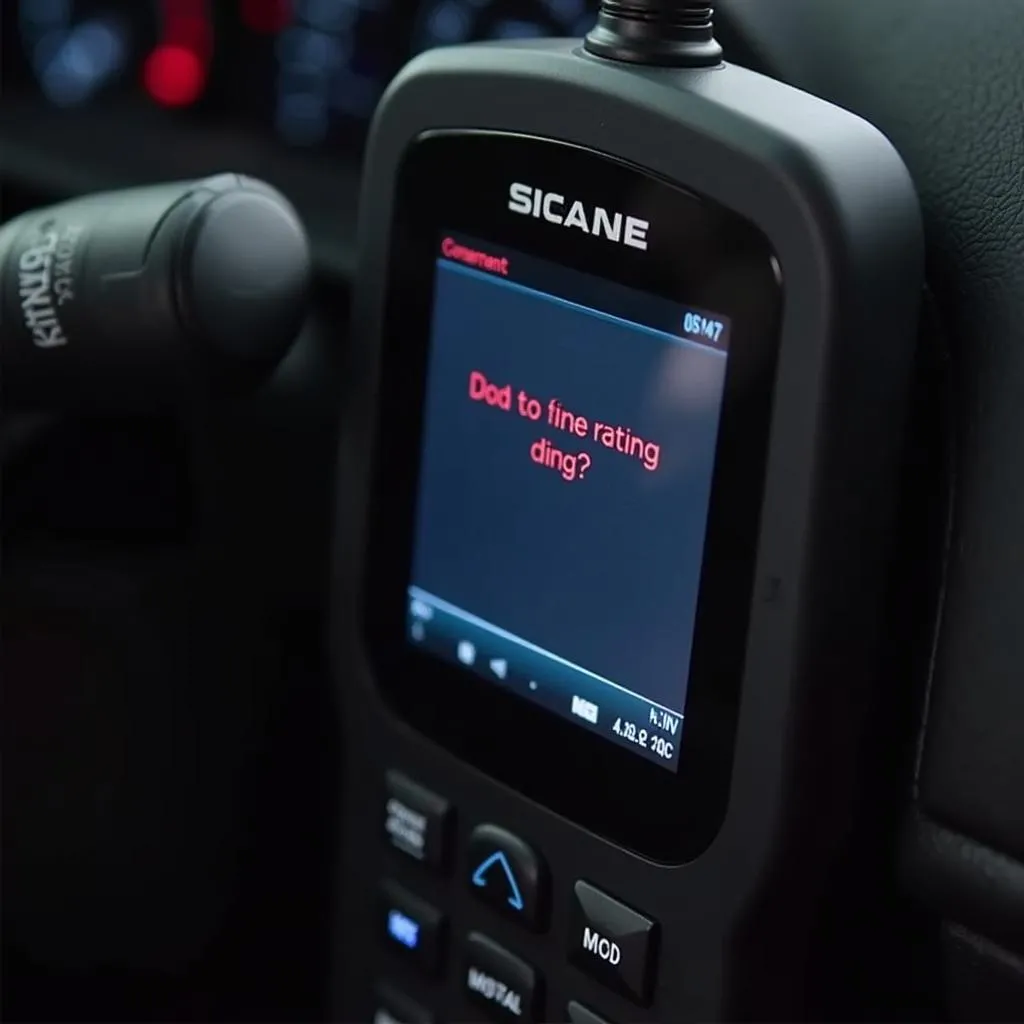Imagine this: You’re in your garage, ready to diagnose your trusty 2015 Audi A4. You hook up your scan tool, anticipation building, and…nothing. The dreaded “scan tool failing to connect” message pops up. Frustrating, right? Don’t worry, we’ve all been there. This frustrating scenario is more common than you think, and luckily, the solution is often simpler than you might expect.
After this quick read, you’ll be armed with the knowledge to tackle this common issue head-on and get back to what you do best – keeping those engines running smoothly. We offer a range of resources for automotive enthusiasts and professionals, from reviews of the Best Affordable Professional Scan Tool to in-depth guides on specific models.
Why Won’t My Scan Tool Connect?
Before we dive into solutions, let’s understand why a scan tool might refuse to communicate with your car. It’s like trying to have a conversation with someone speaking a different language – both sides need to be on the same page.
From a mechanic’s perspective, here are some of the most common culprits:
- Communication Breakdown: The OBD-II port, your car’s communication hub, could be faulty. Dirt, debris, or damaged pins can disrupt the connection.
- Power Struggle: Just like your phone needs juice, the scan tool relies on power from the vehicle’s battery. A weak or dead battery can cause connection issues.
- Faulty Fuse: A blown fuse dedicated to the OBD-II port could be the silent saboteur.
- Software Snag: Outdated scan tool software can lead to compatibility issues with your vehicle’s system.
 Scan tool connected to a car's OBD port
Scan tool connected to a car's OBD port
Troubleshooting Steps for a Scan Tool Not Connecting
Now, let’s shift gears and dive into some practical steps to get you back on track:
1. Check the Basics
This might seem obvious, but you’d be surprised how often the simplest solutions are overlooked. Ensure the scan tool is powered on and properly plugged into the OBD-II port. Speaking of which, locate your vehicle’s OBD-II port – it’s typically found under the driver’s side dashboard.
2. The Power of a Reset
Sometimes, a simple reset is all it takes. Disconnect the scan tool, turn off your car’s ignition, and disconnect the negative battery cable for about 5 minutes. This will reset the vehicle’s electrical system. Reconnect the battery cable, turn on the ignition, and try connecting the scan tool again.
3. Inspect the OBD-II Port
Carefully examine the OBD-II port for any visible damage, dirt, or debris. Bent or broken pins can disrupt the connection. If you spot any issues, gently straighten bent pins or use compressed air to clean out debris.
Looking for a reliable scan tool that won’t let you down? Check out our curated list of the Top-Rate Auto Scan Tools designed for both professionals and DIY enthusiasts.
4. Check the Fuse
Refer to your vehicle’s owner’s manual to locate the fuse box and identify the fuse associated with the OBD-II port. Inspect the fuse for any signs of a blown fuse, such as a broken wire or a dark spot. If you find a blown fuse, replace it with a new one of the same amperage.
 Mechanic inspecting a car fuse box
Mechanic inspecting a car fuse box
5. Update Your Scan Tool Software
Outdated software can lead to compatibility issues. Most reputable scan tool manufacturers provide software updates online. Connect your scan tool to your computer and visit the manufacturer’s website to download and install the latest software version.
6. Seek Professional Help
If you’ve exhausted all troubleshooting options and your scan tool is still failing to connect, it might be time to call in the pros. A qualified mechanic with advanced diagnostic tools can help pinpoint and resolve the issue.
FAQs About Scan Tool Connection Issues
Q: Can using the wrong scan tool damage my car?
A: While it’s unlikely to cause damage, using a scan tool not specifically designed for your vehicle’s make and model might not provide accurate readings or access all system functions.
Q: My scan tool was working fine yesterday, but now it won’t connect. What happened?
A: This sudden change could indicate a blown fuse, a loose connection at the OBD-II port, or a problem with the scan tool itself.
Q: I’m trying to connect a scan tool to my classic 1978 Chevrolet Camaro, but it’s not working. What’s going on?
A: Vehicles manufactured before 1996 might not have an OBD-II port or use a different diagnostic connector. You might need a specialized adapter or scan tool to communicate with these older vehicles.
Need More Help?
We understand that dealing with car troubles can be frustrating. If you’re still experiencing issues connecting your scan tool or need further assistance, our team of automotive experts is just a message away. Contact us on WhatsApp at +84767531508 for personalized support and guidance. We’re here to help you get back on the road!
Remember, a little troubleshooting can go a long way. By following these steps, you’ll be well-equipped to diagnose and resolve scan tool connection problems. And for those times when you need an extra pair of hands, don’t hesitate to reach out to a trusted mechanic.
Looking for more insights into automotive diagnostics? Explore our in-depth article on the Altus Scan Tool and discover its advanced features for professional-grade diagnostics.


